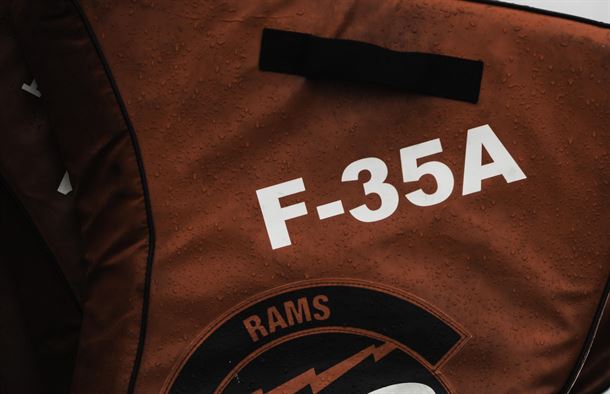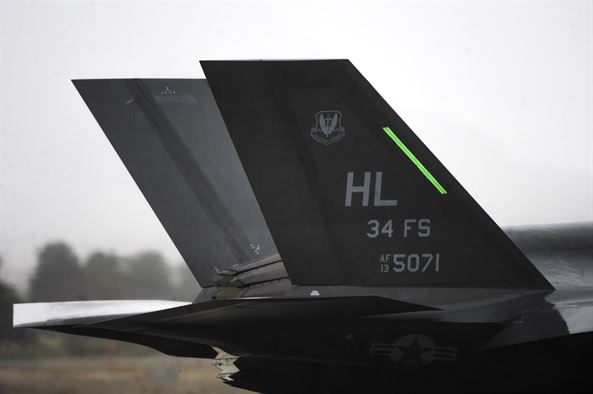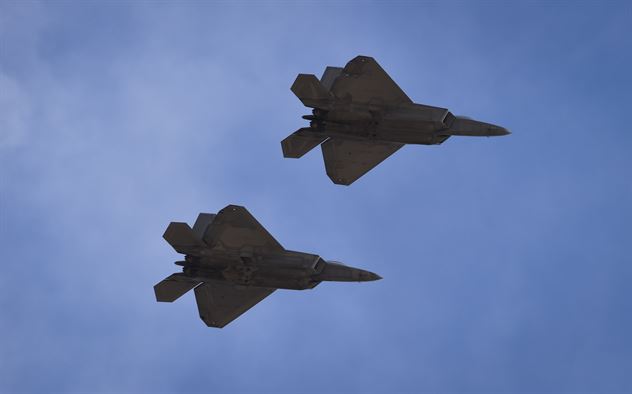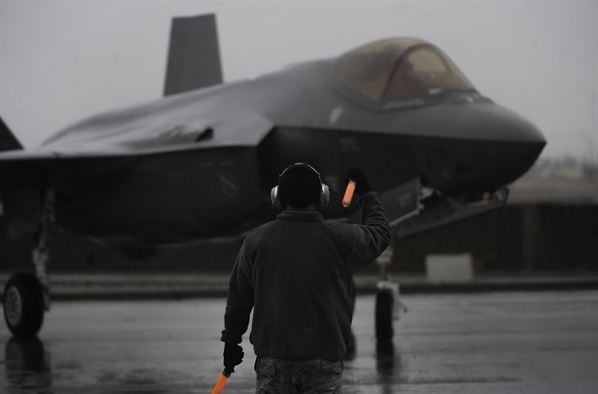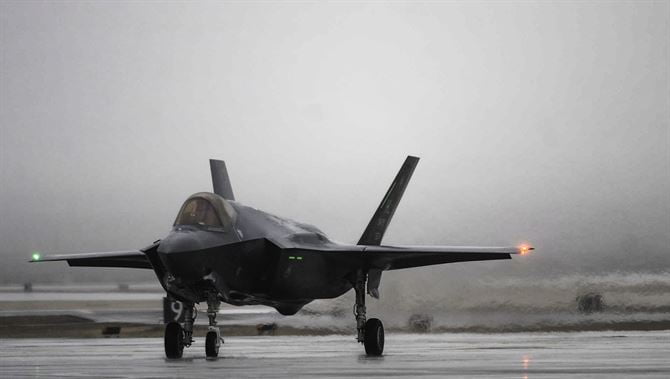2017-01-28 The fifth generation evolution of the USAF is being highlighted as F-35s from Hill and F-22s from Langley are key integrated elements for Red Flag 2017-1.
Both are key parts of shaping new capabilities in the contested battlespace and are working with the RAF and the RAAF in incorporating cyber and EW more broadly into evolving concepts of operations.
The three-week, fourth and fifth generation’ exercise will incorporate the friendly ‘Blue Forces’ against hostile ‘Red Force’ aggressors in live and synthetic training environments, simulating air-to-air, air-to-ground and space and cyber warfare.
“The significance of this Red Flag is that it will be the first time that we have U.S. Air Force F-35 [Lightning II] participation,” said Falanga. “The F-35 will be operating with the F-22 Raptor so there will be additional fifth generation capability and integration that will occur. It is also going to be one of the first times the F-35 operates with coalition assets.”
http://www.nellis.af.mil/News/tabid/6431/Article/1057241/red-flag-17-1-kicks-off-at-nellis-afb.aspx
During our visit to Nellis AFB in 2015, we discussed the roles which F-35 and F-22 could play together for the evolution of the force.
Question: The USAF is the only force with more than 30 years of OPERATIONAL experience with stealth.
And with the F-22 and F-35, is the only force flying TWO stealth aircraft with fusion cockpits.
This means that you can focus on how the two operate together but also on the F-35 global fleet flying against F-22 in future Red Flags.
This provides the USAF and its joint and coalition partners with a huge training and operational advantage doesn’t it?
Col. Spain: We are already working on the F-22 and F-35 working together piece, but you have raised an interesting prospect with regard to the aggressor role.
According to an article by Lori Bultman, 25th Air Force, published January 25, 2017 on the Nellis Air Force Base website, ISR and cyber capabilities are being incorporated into Red Flag 2017-1.
The silent warfighters of the Intelligence, Surveillance and Reconnaissance and Cyber communities are honing their operational skills and testing new capabilities during Red Flag 17-1 at the Nevada Test and Training Range north of Las Vegas, yesterday through Feb. 10.
Red Flag is a realistic combat training exercise involving the air, space and cyber forces of the United States and its allies.
In light of military technological advances, the multi-domain exercise is evolving to include more realistic scenarios by increasing the use of cyber capabilities and other non-kinetic effects in planning and warfighting.
“We are bringing the non-kinetic duty officers into the fight at Red Flag,” said Lt. Col. Neal, chief, current operations, 25th Air Force. “These experts in ISR and cyber warfare are the newest weapons in our command and control arsenal.”
Going to Red Flag and blowing up things kinetically is no longer enough to keep us ahead of the game, Hayes said: “The new face of warfare includes land, sea, air, space and cyber.”
To test the readiness of all warfighters, Red Flag employs realistic threat systems and an opposing enemy force that cannot be replicated anywhere else in the world. The simulated battlefield allows combat air forces to train to fight together, with their cyber and ISR partners, in a peacetime environment, so they can survive and win together in combat situations.
Warfighters will also test the latest in targeting technology, Network Centric Collaborative Targeting, during Red Flag 17-1.
NCCT is the latest effort to ensure the ISR global portfolio delivers actionable data to decision-makers, airborne platforms and Air Force Distributed Common Ground Systems, said Garland Henderson, operational integration branch chief, 25th Air Force.
This new technology will improve targeting capabilities through coordination of assets.
“NCCT theoretically shortens the amount of time needed to fix targeted emitters, fleeting targets and moving ground targets by simultaneously cueing airborne with other collection assets,” Henderson said. “Correlation of assets and cross-cueing of command and control, Intelligence, Surveillance and Reconnaissance data across multiple security domains is the main objective of NCCT.”
Formal testing of NCCT at Red Flag is the last step in ensuring this technology represents a highly visible and maturable Air Force ISR enabler within the Global Integrated ISR portfolio, Henderson added.
RED FLAG was established in 1975 as one of the initiatives directed by Gen. Robert J. Dixon, then commander of Tactical Air Command, to better prepare our forces for combat. Tasked to plan and control this training, the 414th Combat Training Squadron’s mission is to maximize the combat readiness, capability and survivability of participating units by providing realistic training in a combined air, ground, space and electronic threat environment while providing for a free exchange of ideas between forces.
A typical RED FLAG exercise involves a variety of attack, fighter and bomber aircraft, reconnaissance aircraft, electronic warfare aircraft, air superiority aircraft, airlift support, search and rescue aircraft, aerial refueling aircraft, and command and control aircraft, as well as ground-based command and control, space and cyber forces. It has expanded in recent years to include all spectrums of warfare (command, control, intelligence, electronic warfare), and added night missions to each exercise period.
The role of the Hill F-35s in the exercise was highlighted by a January 20, 2017 story published by the 388th Fighter Wing.
Pilots and maintainers from the 388th and 419th Fighter Wings deployed the F-35A Lightning II to Nellis AFB, Nev., Jan. 20.
This is the first deployment to Red Flag for the F-35A and the first large movement since the Air Force declared the jet combat ready in August 2016.
Red Flag is the Air Force’s premier air-to-air combat training exercise. Participants include both United States and allied nations’ combat air forces. The exercise provides aircrews the experience of multiple, intensive air combat sorties in the safety of a training environment.
“Our Airmen are excited to bring the F-35 to a full-spectrum combat exercise,” said Col. David Lyons, 388th FW commander. “This battle space is going to be a great place to leverage our stealth and interoperability. It’s a lethal platform and I’m confident we will prove to be an invaluable asset to the commander.”
The jets will be at Red Flag through Feb. 10. While deployed, the F-35 will fly alongside fourth-and-fifth generation platforms and provide offensive and defensive counter air, suppression of enemy air defenses, and limited close air support.
“Red Flag is hands-down the best training in the world to ensure our Airmen are fully mission ready,” said Col. David Smith, 419th FW commander. “It’s as close to combat operations as you can get. Our Reserve pilots and maintainers are looking forward to putting the F-35A weapon system to the test alongside our active duty partners to bring an unprecedented combat capability.”
The F-35A is a fifth-generation multi-role stealth fighter designed to gather, fuse, and distribute more information than any other fighter in history.
The first operational F-35As arrived at Hill AFB in October 2015. The base will eventually be home to three operational F-35 fighter squadrons with a total of 78 aircraft by the end of 2019. The active duty 388th FW and Air Force Reserve 419th FW will fly and maintain the Air Force’s newest fighter aircraft in a Total Force partnership, which capitalizes on the strength of both components.
And the long range strike assets represented by legacy bombers but also in anticipation of a new bomber capability is part of the exercise as well.
In an article by Airman 1st Class Randahl J. Jenson, 28th Bomb Wing Public Affairs, published on January 23, 2017, the inclusion of assets from Ellsworth is highlighted.
The 37th Bomb Squadron launched five jets from here Jan. 20, 2017, to take part in Red Flag 17-1 at Nellis Air Force Base, Nev.
Aircrews and pilots from across the world will be working together in the joint exercise, testing their ability in air-to-air and air-to-ground combat from Jan. 23 to Feb. 10, 2017.
Along with troops from across the DoD, members of the British Royal Air Force, Australian Royal Air Force and NATO will be participating in the two-week exercise.
“Red Flag is a huge integration exercise,” said Lt. Col. Nathan Rowan, the assistant director of operations assigned to the 37th BS. “It allows us to bring in intelligence, surveillance and reconnaissance capabilities together and test them in realistic scenarios.”
The quarterly exercise is hosted north of Las Vegas on the Nevada Test and Training Range – a 2.9 million acre region with more than 15,000 square miles of airspace.
“Historically, NTTR has hosted Red Flag since the exercise’s creation,” Rowan said. “It’s a big chunk of air space that is able to accommodate Large Force Exercises like Red Flag.”
The NTTR has nearly 2,000 potential targets and an enemy force to create a simulated battlefield – providing pilots with the most realistic training possible. More than 80 aircraft will be taking off and landing twice a day.
“You don’t want an aviator’s first combat sortie to be in actual combat,” Rowan said. “By training them at Red Flag, they will be much more prepared.”
http://www.whiteman.af.mil/News/Article-Display/Article/1057642/ellsworth-launches-to-red-flag-17-1
In short, the F-22s and F-35s flying with the combat fleet starts reshaping the concepts of operations of the US and allied combat fleet in innovating in ensuring capabilities to prevail in the contested battlespace.
The photos in the slideshow above are credited to the USAF.


